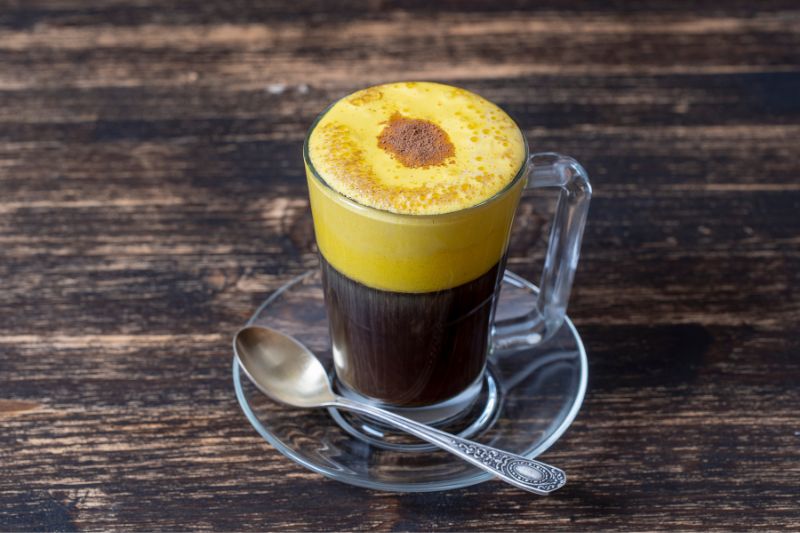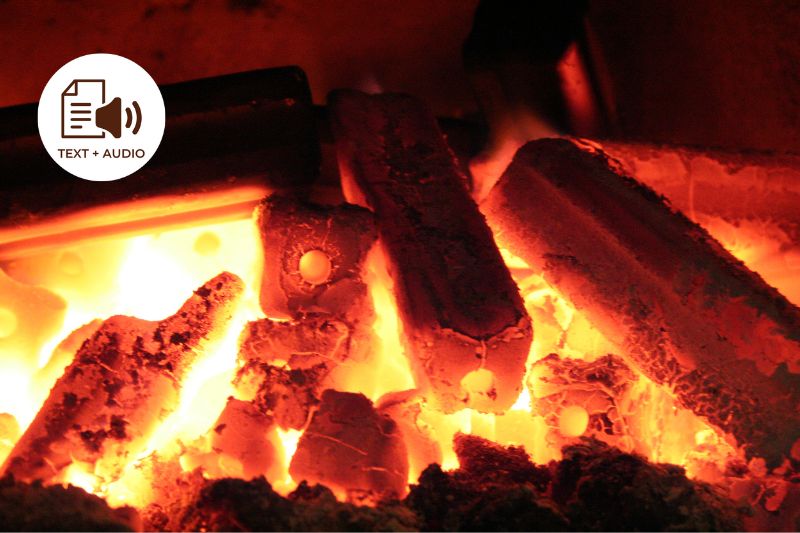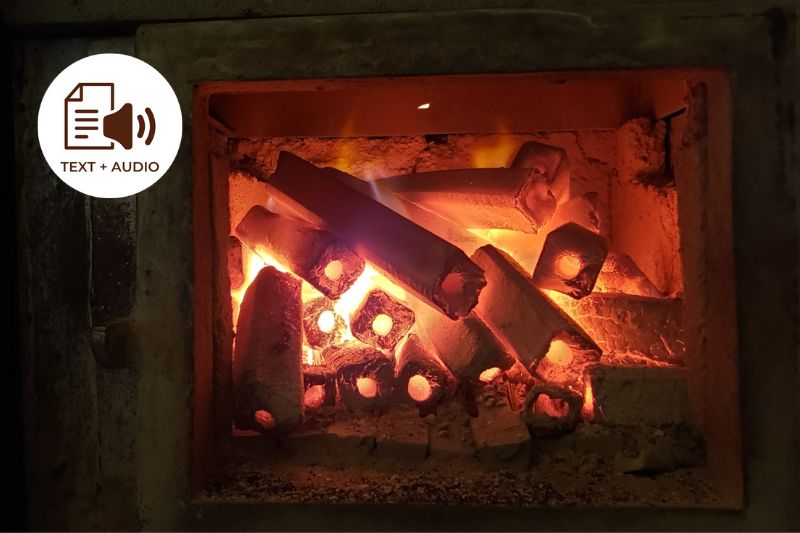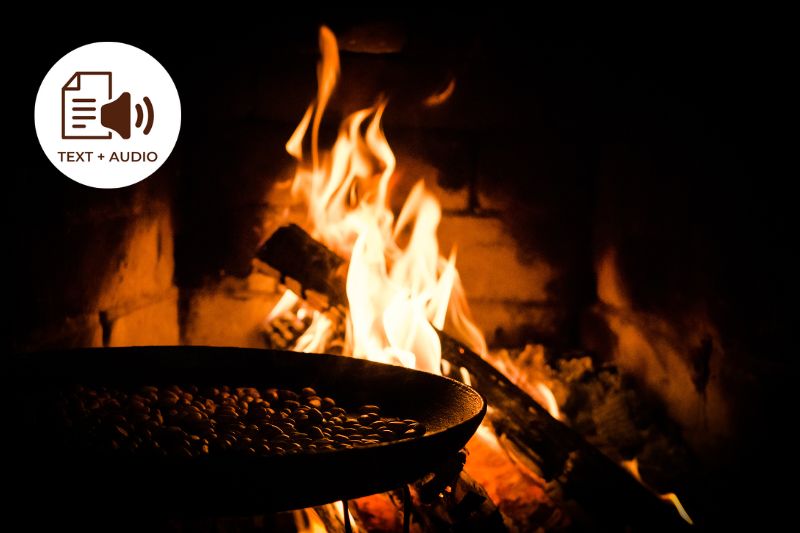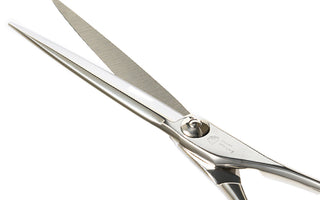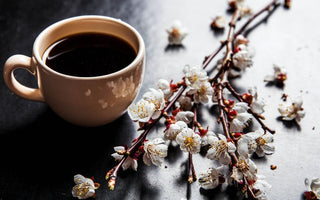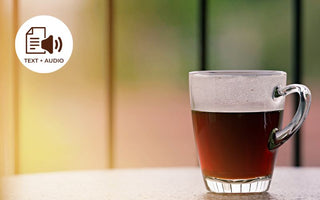Introduction
Across the span of the past few centuries, coffee beans reached all corners of the world. In every place it went, people poured a drop of their own philosophy and culture in the drink.
Ingenious members of the entire coffee chain, from farmers to consumers, have researched and experimented vigorously for decades.

Their goal: to make the best cup they could! This has brought the wide variety of aromas and flavors we can try today.
There is one kind of coffee however, unique and refined, that stands out as a pinnacle of craftsmanship, levitating between art and science. I am talking about no other than the Japanese Sumiyaki.
What is Sumiyaki Coffee?
Sumiyaki translates to “Charcoal-Heated” or “Charcoal-roasted” in English, and its name is self-explanatory.
Sumiyaki is coffee roasted in a charcoal burner, instead of using the methods of direct heat or hot air.
It is special because it bakes the coffee beans both internally and externally in two ways.
When the charcoal is burned (usually a special charcoal called Binchotan but there are different kinds as well) the heat emitted roasts the exterior of the bean. However, by burning the charcoal, Infrared and Far Infrared Rays are emitted as well and that’s what roasts the inside of the beans (radiation between light and microwave waves).
Infrared and Far Infrared rays cause friction between the water molecules still in the core of the bean, which inherently produces heat, and the bean is cooked from within.

Origins
In Japan, coffee was introduced in the late 19th century, and during the first two decades of the 20th, it grew immensely in popularity. More than 30,000 coffeehouses opened across the county and several major Coffee Industries emerged.
The idea of roasting coffee with charcoal, which is widely encountered in Japanese cousin, emerged sometime in the late 1920s and gradually spread throughout East Asia.
It is believed to have taken a lot of decades before it was mastered, but its effects on the beverage’s quality were unparalleled.
During the Second World War, imports of coffee beans were hard and scarce and as a result substitute were used to resemble the beverage.
When the imports resumed in 1950, many producers had already stopped using the Sumiyaki roasting method already.

The specific technique, with all its benefits was also in decline as more affordable, less demanding kinds of coffee took over the Japanese market.
One of the reasons for that is because, as opposed to before, coffee was now a commercial product, not only encountered in coffeehouses and restaurants.
As a result, due to the increase of the demand, and the rapid popularity more affordable coffees gained, Sumiyaki remained as a specialty coffee, for individuals who seek a deeper flavor.
Sumiyaki coffee is still heavily present in Japan and is now growing in popularity in the United States as well. There are multiple major companies that produce it, UCC, Hagiwara and Kyowa just to name a few.
It hasn’t been introduced all around the world yet, but the quality and craftsmanship that built its reputation, speak volumes of its future path.
What does it offer?
There are a lot of benefits of Sumiyaki roasting compared to other roasting methods.
First, due to the use of charcoal in the process, the coffee beans absorb the unique odor that results in a far smokier yet balanced aroma.
Due to the different way of roasting the beans, both internally and externally the complete eradication of moisture is achieved, without having to use too high a heat or too long a duration.
That way, the end product carries a far richer flavor profile, without compromising the special traits of the individual beans.
When activated charcoal like the one used in Sumiyaki is burned, it emits Carbon Monoxide (CO) gases as well. This helps protect the beans’ oxidization after they are taken out of the roaster.
Due to their exposure to oxygen directly after the roasting process, coffee beans normally have a short shelf-life, but due to CO emission, this isn’t true for Sumiyaki. It comes with a longer life expectancy when properly stored.

Drawbacks
Sumiyaki coffee, despite the certain advantages it has over other processing methods, it also has a few significant disadvantages as well.
Due to the peculiarity of the way the heat is produced, compared to conventional coffee roasting, a very high level of expertise is required to be done properly.
This is because, Sumiyaki stands somewhere between art and science, where the roaster has to learn how to manage the fire so that Infrared and Far Infrared rays are evenly distributed amongst the beans and a specific temperature is maintained throughout the process. Naturally, this takes a lot of experience and skill to master.
In traditional Sumiyaki roasting, charcoals with special traits are preferred, like apple tree charcoal for the aroma or Binchotan charcoal for the duration and high quality.
These special charcoals have a direct positive impact on the end result but come with a significantly higher price for the same reason.
Compared to other roasting methods, Charcoal Roasting is both more expensive and harder to accomplish.

Conclusion
Sumiyaki is one of the least known roasting methods but can yield one of the highest quality results in the world of coffee.
It offers a rich, more complete flavor profile paired with a captivating, smoky aroma and a longer shelf life as well. It brings the best out of your chosen bean or blend.
Of course, it comes with its own drawbacks due to the high requirements that need to be met before a single batch can successfully be roasted.
However, it stands as a unique kind of coffee that represents all the craftsmanship and diligent pursuit of the peak quality often encountered in Japanese culture.
It carries a strong desire for harmony and depth of flavor and aroma and despite having declined in production in the span of the past few decades, it seems like its history has just begun!
This post was first published in 2022 but it was updated in 2023 just for you.
Get Free Bonus Book


